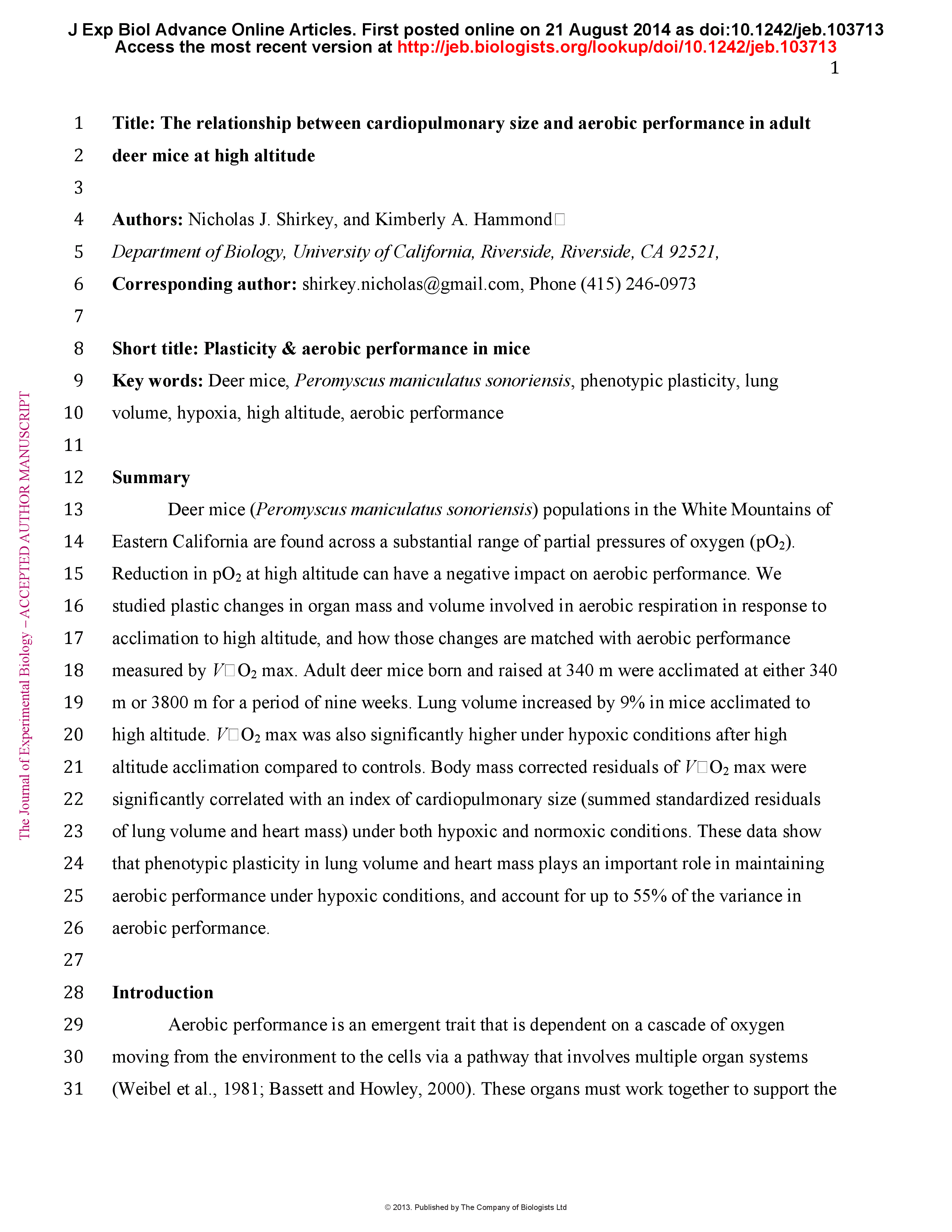Abstract
Deer mice (Peromyscus maniculatus sonoriensis) populations in the White Mountains of Eastern California are found across a substantial range of partial pressures of oxygen (pO2). Reduction in pO2 at high altitude can have a negative impact on aerobic performance. We studied plastic changes in organ mass and volume involved in aerobic respiration in response to acclimation to high altitude, and how those changes are matched with aerobic performance measured by VO2 max. Adult deer mice born and raised at 340 m were acclimated at either 340 m or 3800 m for a period of nine weeks. Lung volume increased by 9% in mice acclimated to high altitude. VO2 max was also significantly higher under hypoxic conditions after high altitude acclimation compared to controls. Body mass corrected residuals of VO2 max were significantly correlated with an index of cardiopulmonary size (summed standardized residuals of lung volume and heart mass) under both hypoxic and normoxic conditions. These data show that phenotypic plasticity in lung volume and heart mass plays an important role in maintaining aerobic performance under hypoxic conditions, and account for up to 55% of the variance in aerobic performance.








